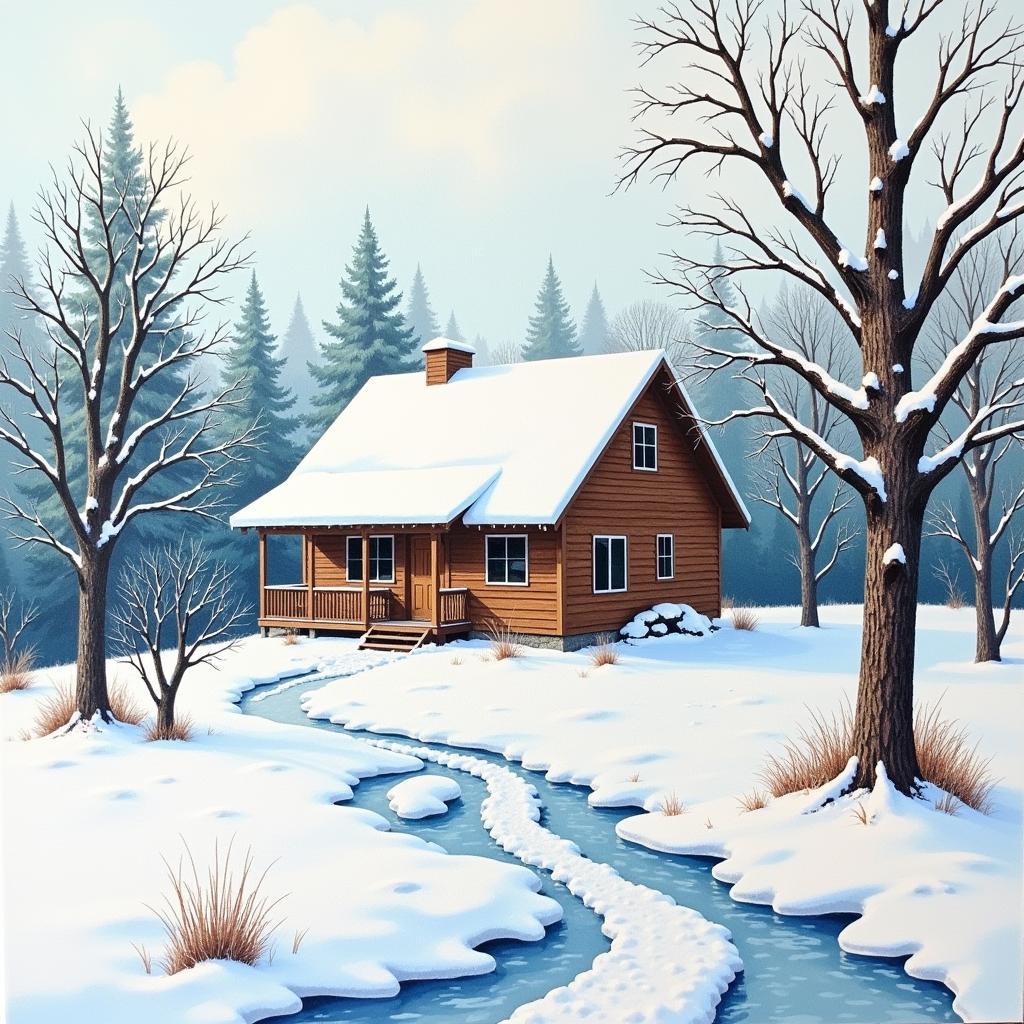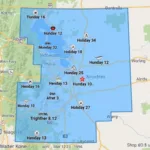Snow. The word alone evokes images of pristine landscapes, sparkling under a crisp winter sun. But capturing that pure, white expanse on paper can be a challenge for artists. How do you bring depth, texture, and that magical, ethereal quality to something seemingly so simple? That’s where the art of learning How To Color Snow comes in.
Contrary to what you might think, coloring snow is not about leaving the paper blank. It’s about understanding how light interacts with this unique, ever-changing element. It’s about utilizing a range of shades and techniques to create the illusion of depth, shadow, and even color within the snowy expanse.
Understanding the Nuances of Snow
Before we delve into the techniques, let’s address a common misconception: snow isn’t simply white. While freshly fallen snow might appear as a blank canvas, look closer, and you’ll notice subtle shifts in color and value. The time of day, the surrounding environment, and even the texture of the snow itself all play a role in how it reflects light.
For instance, snow in the shadows might take on a cool, bluish tint, while snow reflecting a sunset might appear warm and peachy. This interplay of light and shadow is what breathes life into your artwork, transforming a flat, white space into a dynamic, three-dimensional landscape.
Tools of the Trade: Choosing Your Medium
The beauty of coloring snow lies in its versatility. You can use various mediums to achieve stunning results, each offering its unique strengths and effects.
- Watercolor: This medium excels at capturing the translucent, ethereal quality of snow. With watercolors, you can create soft, gradual transitions between shades, perfect for depicting snowdrifts and distant landscapes.
- Colored Pencils: These versatile tools offer excellent control and precision, allowing you to build up layers of color and create detailed textures. Colored pencils are ideal for adding subtle shadows, highlights, and even intricate snowflake patterns.
- Acrylics: If you prefer vibrant, opaque colors, acrylics can be a fantastic option for depicting snow. Their quick drying time allows for layering and creating bold, textured effects, ideal for capturing the crunch of fresh snow underfoot.
Mastering the Art of Shadows and Highlights
 Various techniques for shading snow in art.
Various techniques for shading snow in art.
Here’s where the magic truly happens. To make your snow pop off the page, you need to understand how shadows and highlights define its form and volume.
- Think Beyond Gray: When shading snow, resist the urge to reach for plain gray. Instead, opt for cool blues, purples, and even greens to create a sense of depth and coolness. Experiment with different hues to find what works best for your scene.
- Follow the Light Source: Identify the primary light source in your composition. This will dictate where your shadows fall, creating a sense of direction and dimension in your artwork.
- Layer It Up: Don’t be afraid to build up your shadows and highlights gradually. This layering technique creates a sense of depth and realism, adding a luminous quality to your snow.
Beyond the Basics: Adding Depth and Texture
Once you’ve mastered the fundamentals, you can experiment with different techniques to add even more depth and intrigue to your snowy scenes.
- Stippling: This technique involves using small dots to create the illusion of texture. Use a light touch and vary the density of your dots to depict different snow textures, from smooth and powdery to rough and icy.
- Scumbling: Similar to stippling, scumbling involves using small, circular motions to build up layers of color. This technique is excellent for creating soft, blended shadows and transitions between snowdrifts.
- Salt Technique: For a unique, textured effect, sprinkle a bit of salt onto your wet watercolor paper. As the paint dries, the salt absorbs the water, creating interesting, crystalline patterns that resemble snowflakes.
Capturing the Magic: Tips for Success
- Observe Real Snow: The best way to learn how to color snow is to study the real thing. Take a walk outside, observe how the light interacts with the snow, and try to replicate those effects in your artwork.
- Experiment with Different Papers: The texture of your paper can significantly impact the final look of your artwork. Experiment with smooth, textured, or even toned papers to discover what best suits your style and medium.
- Don’t Be Afraid to Make Mistakes: The beauty of art lies in its imperfection. Allow yourself to experiment, make mistakes, and learn from each attempt. The more you practice, the more confident you’ll become in your ability to capture the magic of snow on paper.
Frequently Asked Questions
Q: How do I prevent my snow from looking muddy?
A: Use light pressure and build up your layers gradually. Avoid using too much water with watercolors, and always allow each layer to dry completely before adding another.
Q: Can I use white paint to highlight snow?
A: While you can use white paint for highlights, it’s often more effective to use other techniques, such as lifting color with a damp brush or reserving white space in your composition.
Q: How do I create a sense of depth in a snowy landscape?
A: Use atmospheric perspective by making distant objects lighter and less detailed than those in the foreground.
Ready to Unleash Your Inner Artist?
Coloring snow is a journey of observation, experimentation, and creativity. By understanding the interplay of light, shadow, and texture, you can transform a blank canvas into a captivating winter wonderland. So grab your art supplies, embrace the beauty of winter, and let your creativity flow.
Need help along the way? Color Box Hanoi is here to guide you. Contact us at 0373298888 or [email protected]. Visit our store at 86 Cầu Giấy, Hà Nội. Our team is available 24/7 to answer your questions and help you on your artistic journey. You can also find more tips and tricks on our website, like our guides on how to color snowflakes or how to color snow with colored pencils. Let’s create something beautiful together!

